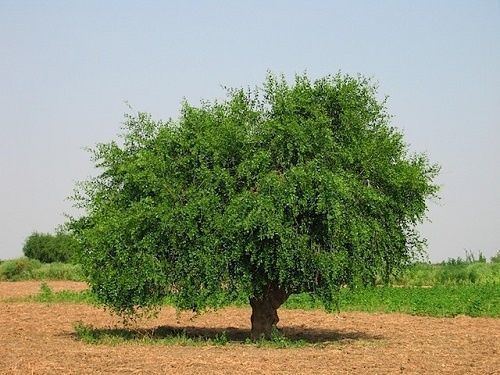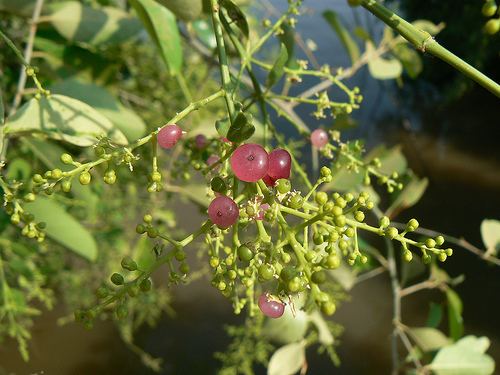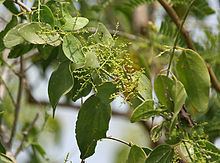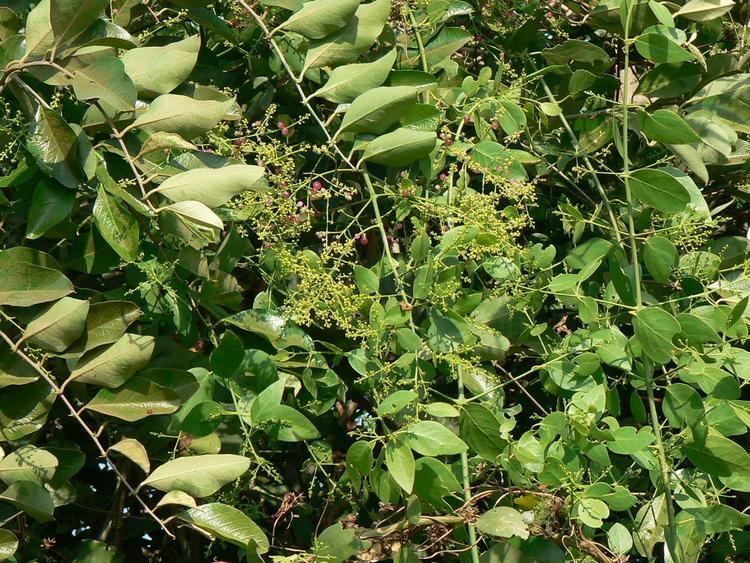Rank Species | Genus Salvadora Higher classification Salvadora | |
 | ||
Similar Salvadora, Salvadoraceae, Salvadora oleiodes, Gum arabic tree, Desert date | ||
Salvadora persica grows in bharatpur
Salvadora persica (Arak, Galenia asiatica, Meswak, Peelu, Pīlu, Salvadora indica, or toothbrush tree, mustard tree, mustard bush), is a species of Salvadora. Salvadora persica has antiurolithiatic properties. Used for centuries as a natural toothbrush, its fibrous branches have been promoted by the World Health Organization for oral hygiene use. Research suggests that it contains a number of medically beneficial properties including abrasives, antiseptics, astringent, detergents, enzyme inhibitors, and fluoride.
Contents
- Salvadora persica grows in bharatpur
- Ancient salvadora persica or piloo jaal trees growing in rajasthan
- Distribution
- Appearance
- History and use
- Scientific analysis
- References

Ancient salvadora persica or piloo jaal trees growing in rajasthan
Distribution

Native to: Algeria, Angola, Botswana, Cameroon, Chad, Egypt, Eritrea, Ethiopia, India, Iran, Israel, Jordan, Kenya, Libya, Malawi, Mali, Mauritania, Mozambique, Niger, Nigeria, Oman, Pakistan, Palestine, Saudi Arabia, Senegal, Somalia, South Africa, Sri Lanka, Sudan, Syria, Tanzania, Uganda, Yemen, Zambia, Zimbabwe Also occurs in Namibia.
Appearance

Salvadora persica is a small tree or shrub with a crooked trunk, seldom more than one foot in diameter. Its bark is scabrous and cracked, whitish with pendulous extremities. The root bark of the tree is similar to sand, and the inner surfaces are an even lighter shade of brown. It has a pleasant fragrance, of cress or mustard, as well as a warm and pungent taste. The leaves break with a fine crisp crackle when trodden on. The tree grows to a maximum height of three meters. In Pakistan, these ancient, majestic and sturdy trees are more closely associated with graveyards, like the cypress tree in English culture.
History and use

Salvadora persica is a popular teeth cleaning stick throughout the Arabian Peninsula, as well as the wider Muslim world. Also commonly referred to as miswak, it is often mentioned that the Islamic Prophet Muhammad recommended its use. He is quoted in various Hadith advising the use of the siwak. Use of the stick dates back to the Babylonians some 7000 years ago. They were also used by the Greeks, Romans, Jews and the Egyptians.

The fresh leaves can be eaten as part of a salad and are used in traditional medicine for cough, asthma, scurvy, rheumatism, piles and other diseases. The flowers are small and fragrant and are used as a stimulant and are mildly purgative. The berries are small and barely noticeable; they are eaten both fresh and dried.

In Namibia the mustard bush is used as a drought-resistant fodder plant for cattle. The Topnaar people that still live on the Kuiseb River use it to feed their goats. The plant's seeds can be used to extract a detergent oil.
As of 2009, Botanic Gardens Conservation International has a total of eight Salvadora persica plants in conservation.
Scientific analysis
According to chemical and phytochemical analysis of Salvadora persica, there was an occurrence of carbohydrates and/or trimethylamine; an alkaloid which may effectively be salvadorine; chlorides; sulfur; terpenes; vitamin C; glycosides; large amounts of fluoride and silica; small amounts of tannins, saponins, flavonoids and sterols.
